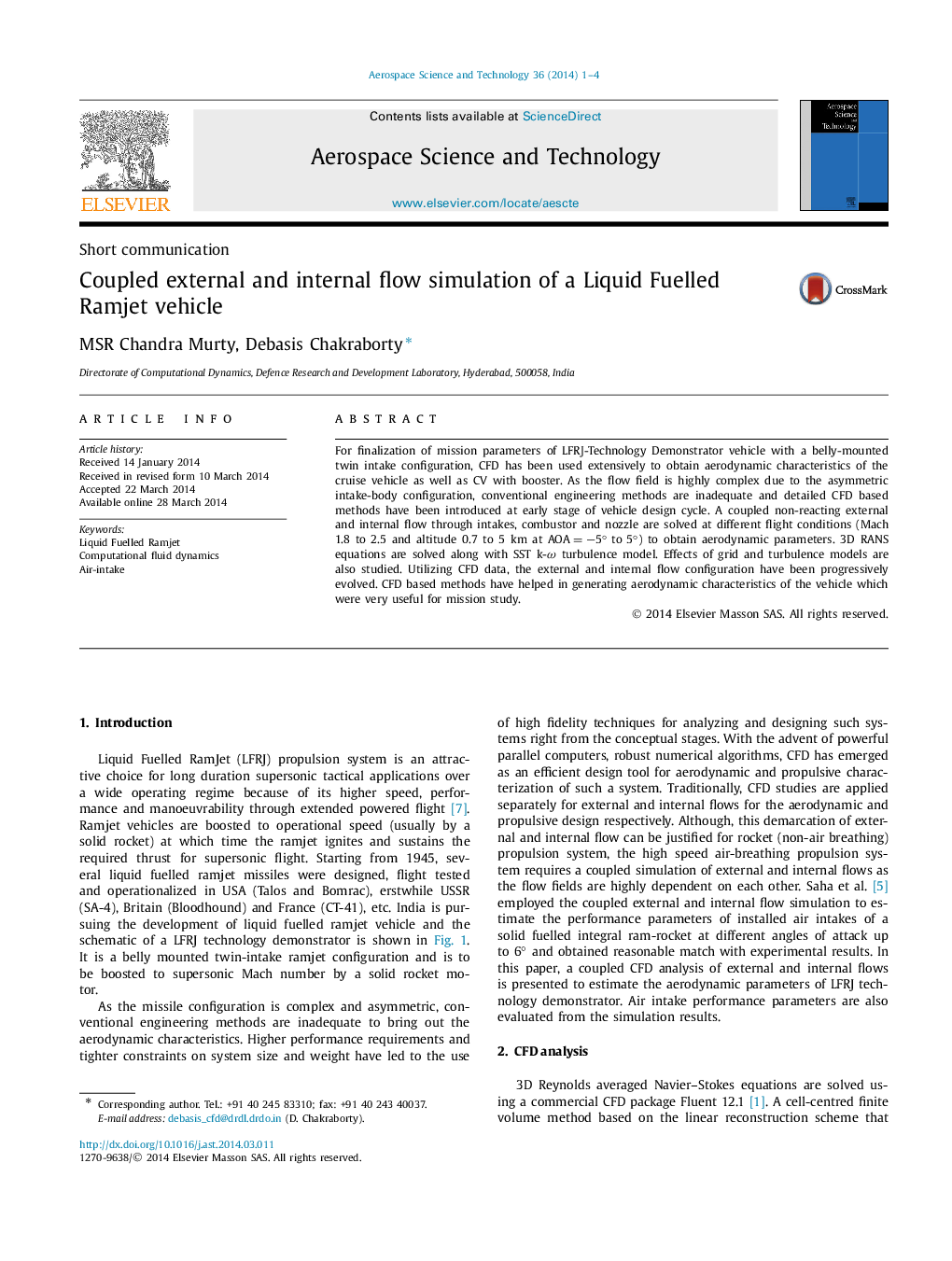| Article ID | Journal | Published Year | Pages | File Type |
|---|---|---|---|---|
| 1718060 | Aerospace Science and Technology | 2014 | 4 Pages |
For finalization of mission parameters of LFRJ-Technology Demonstrator vehicle with a belly-mounted twin intake configuration, CFD has been used extensively to obtain aerodynamic characteristics of the cruise vehicle as well as CV with booster. As the flow field is highly complex due to the asymmetric intake-body configuration, conventional engineering methods are inadequate and detailed CFD based methods have been introduced at early stage of vehicle design cycle. A coupled non-reacting external and internal flow through intakes, combustor and nozzle are solved at different flight conditions (Mach 1.8 to 2.5 and altitude 0.7 to 5 km at AOA=−5° to 5°AOA=−5° to 5°) to obtain aerodynamic parameters. 3D RANS equations are solved along with SST k-ωk-ω turbulence model. Effects of grid and turbulence models are also studied. Utilizing CFD data, the external and internal flow configuration have been progressively evolved. CFD based methods have helped in generating aerodynamic characteristics of the vehicle which were very useful for mission study.
